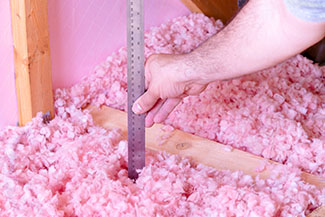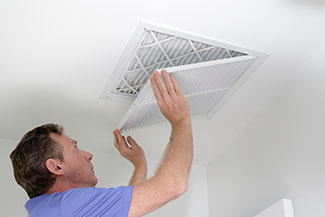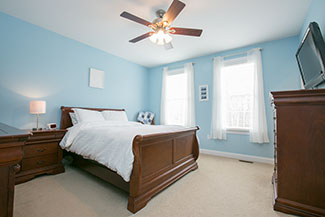Is Your Home Ready for the Heat?
 05 May 2020
05 May 2020 

What every homeowner wants to know! Can We Survive The Heat??
Every homeowner wants to know that they are ready to weather the desert temps comfortably.
If you are a regular Rosie on the House listener, you have heard Rosie talk about the importance of a whole house energy audit: "it's such a great place to start", Rosie says.
Jeff Carmichael of REEis Home Performance and Air Conditioning, a Rosie on the House Certified Partner, likes to make an appointment with the homeowner and give the house a visual inspection before scheduling an audit. Though the audit is only $99, it is time consuming. An onsite visit from the building analyst at REEis can help determine whether there is room for energy upgrades that would provide a return on investment.
They offer a free visual evaluation that looks for air leaks in windows and doors, visual signs of leakage in the duct system, thermostat programming, verifies the size of the A/C unit to ensure it is correct for the homes square footage, and attic insulation levels. They will even check that the thermostat is programmed effectively and look over the utility bill for any surprises or concerns.
When to Schedule an Energy Audit:
An audit is scheduled if it is determined there is room for energy improvements, upgrades and/or savings. REEis will provide information on current rebates and incentives as well.
Most Common Issues Found During an Energy Audit:
Problem | Leaky Air Ducts
The house is closed up and depressurized using a blower door. Each register in the home is tested. Leaky air ducts will show up during this test. Inconsistent comfort issues in the home are considered as well. For example, one room is exceptionally hot or cold.
Solution for Leaky Air Ducts
Discovery of leaks forces the question: should the duct work be replaced or repaired? Duct work that is under or oversized can cause the unit to work inefficiently. Ducts that are too small restrict the flow of air and cause the A/C to work extra hard. Resizing duct work and/or installing new registers in better locations are 2 possible solutions.
Problem | Insufficient Insulation
Fiberglass blown in insulation should be 12 to 14 inches deep. Cellulose, blown in insulation should be 12 to 14 inches deep, depending on the insulation manufactures listed R-value per square inch. Insulation can shift and settle over time. Sometimes the initial installation of the insulation was insufficient. This might be the case if your home was built before 2016.
Solution for Insufficient Insulation
Thankfully, most homes built after 2016 have the correct amount of insulation installed. Bringing insulation up to the recommended depth will make a huge difference in the energy efficiency of the home.
Problem | Old Inefficient Air Conditioning Systems
The life of an AC unit is about 10-15 years. Older units, let's say 15 years old and older, may still keep the house cool but older units are more expensive to run than the newer, more efficient models. A good home audit will help to weigh the pros and cons as to the life of your unit and the cost of duct work, etc.
Solution for An Old Inefficient Air Conditioning System
There are lots of factors to consider when it comes time to buying a new AC. The Air Conditioning manufacturers label their units with a SEER rating.
Carmichael says SEER ratings are not as applicable to those in this intense environment. An important thing to consider is the actual technology in the new air conditioning systems: there are 1-stage compressors, 2-stage compressors, and variable speed compressors. These critical components weigh heavy differences on energy savings.
Problem | Lack of Return Air Grills
90 percent of homes have only one return. Not having enough return air restricts comfort because the system can't remove warm humid air. This ultimately chokes the system.
Solution for A Lack of Return Air Grills
Add registers to accommodate your unit. The minimum requirement for a return air grill is 200 square inches per ton of air conditioning. Carmichael says, "we find most homes have a 30x20 square inch grill for 4-5-ton systems, which is anywhere from 200-400 square inches short of the minimum, which means major air restriction."
Should I Do Anything If I Don't Need An Audit?
If an audit isn't needed, REEis makes sure that the homeowner understands the best practices of AC maintenance.
A twice a year checkup, spring and fall, is considered the best practice to keeping an AC unit in good working order.
A spring visit includes an outdoor condenser cleaning. This involves spraying the unit with water and applying a chemical cleaner. The unit should be cleared of any debris as well. Next the condensate lines should be flushed with nitrogen. A refrigerant check, electrical components check, and testing on all wear out components, filters will be switched out (per the homeowner's providence) along with a reminder by the tech to change filters once a month.
Carmichael offers some suggestions for accessing the AC unit at your home:
It is a good idea for homeowners to be on the alert and to ID potential problem areas.
 Return Air: Use the formula above to determine if your return registers are sufficient for your unit.
Return Air: Use the formula above to determine if your return registers are sufficient for your unit.- Insulation: If a homeowner is comfortable and able, they can open the attic lid and do a visual inspection of the insulation from a ladder. Make sure that your insulation is 12-14 inches deep.
- AC Unit: Check outdoor condenser for dirt and debris and call to have a certified technician remove leaves, debris, and chemically clean it.
- Utility Bills: Learn to read your bill and know what is reasonable for your home. 10-12 cents per square foot without a pool is a very efficient home. 2000sqft home with a $200.00 utility bill in the summer months is very good.
- Filters: Make sure they are being replaced once a month with 1" paper pleated filters. This is the least expensive and most effective way to keep your AC healthy.
Other AC Tips Include:
• Ensure you are on the correct utility plan that suits your household needs and lifestyle.
• Use your ceiling fans when you are in the room, turn them off when you are not.
• Do not close off air vents in attempt to cool a different room of your home, this causes back pressure on the hvac system and can lead to pre-mature failures.
###
related content
DIY Q&A: What Is A Seer Rating?
DIY Q&A: Hiring A Pro To Service Your HVAC System And Avoid Scams
DIY Q&A: Does A Dust Storm Affect My Indoor Air Or Harm My Air Conditioning System
DIY Q&A: Rosie's Consumer Guide For Buying A Home AC System
PODCAST: Semi Annual Air Conditioner Maintenance
Print this page
recent post
- Duck, Duck, Duct! How Often Should Ductwork Be Cleaned?
- Vinyl vs. Fiberglass Windows: Which Is The Better Choice Of Replacement Window?
- We May Be The Grand Canyon State, But The Rocky Mountains Are Important For Arizona
- Welcome to Arizona! Things A Newbie to Arizona Should Know
- The Pros & Cons of Buying A Flipped House
- Getting In On The Ground Floor
- Why It’s More Critical Than Ever To Get Your AC Serviced Before Summer
- The Reality of Remodeling
- What To Look For When Comparing Your Roofing Quotes
- What To Expect When Buying New Windows & Doors
